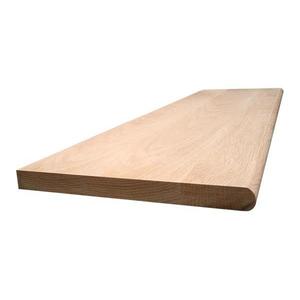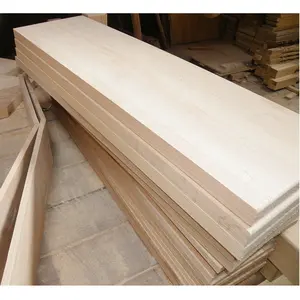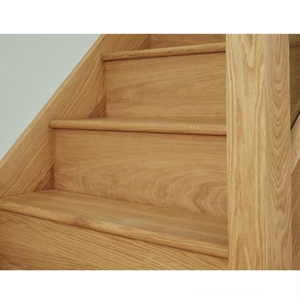(5634 products available)


































































































































































































































Stair treads are the horizontal part of a step where people place their feet when going up or down the stairs. An oak stair tread is a type of stair tread made from oak wood, which is known for its durability, strength, and aesthetic appeal. Oak stair treads are popular in homes and commercial buildings because they can withstand heavy foot traffic and have a beautiful grain pattern that adds warmth and value to any space. Below are the different types of oak stair treads:
Stair treads are important construction elements on any staircase. It is the horizontal part that people step on when climbing or descending the stairs. Oak stair treads are the oak wood elements used in constructing that horizontal step surface. Here are some features of these treads:
There are multiple scenarios where stair treads are used. Here are some of them:
Residential Houses:
Stair treads are used in residential houses. They are in different colors and designs, making them suitable for different interior styles in homes. Oak wood is used to make them, which is long-lasting. They are also made using other types of wood, which are less expensive. These treads are attractive and add value to a home.
Commercial Buildings:
Stair treads are also used in commercial buildings like hotels and restaurants. The tread covers are in different colors that match the interior design of the commercial space. Tread covers are also used to improve safety by providing traction. The treads are made of durable materials to ensure they last due to the high foot traffic in commercial buildings.
Public Spaces:
Stair treads are used in public spaces like museums and libraries. They are used to protect stairs from wear and tear. The treads are made from different materials and in various colors to complement the design of the space. Some public spaces use custom-made stair treads.
Industrial Facilities:
Stair treads are used in industrial facilities. The treads are made from materials like rubber and metal that can withstand heavy use. They are used to prevent slips and falls in these facilities. The treads are also used to mark the edge of each step to improve visibility.
Outdoor Stairs:
The treads are used on outdoor stairs. They are constructed using materials that can withstand weather elements like rain, ice, and snow. The treads are made from textured materials to provide traction.
Spiral Stairs:
The treads are also used on spiral stairs. The treads are constructed using durable materials and have anti-slip properties. They are also designed to fit the curved shape of the stairs.
Choosing the right stair treads for a stair renovation project involves considering many factors. Here is a breakdown of what to consider before selecting the ideal oak treads for a staircase.
Durability and hardness
One of the most important things to consider when buying stair treads is durability. Consider choosing treads from wood species with high Janka hardness. The Janka test measures how resistant the wood is to denting and how easy it is to push a steel ball into the wood. This means that woods with high Janka hardness will be more durable and resistant to wear and tear. This is important for stair treads because they experience a lot of foot traffic. The Janka test is just one way to measure the durability of a wood species. Another way is to look at the wood's KER rating (Knotty, Easy to work with, and Resistance to decay) ). Oak, maple, and hickory are all excellent choices for stair treads because they have a high KER rating.
Color and grain
The color and grain of the wood are also important factors to consider when choosing a stair tread. The color should match the rest of the interior design to give the house a beautiful look. If the interior design has a modern style, consider choosing oak wood stair treads with a straight grain and a darker color. If the design is more traditional, go for a wood species with more texture and a lighter color. Oak treads are available in various colors and grain patterns, so take the time to choose the one that will enhance the overall appearance of the space.
Slip resistance
Another important factor to consider is slip resistance. If the staircase is in a high-traffic area or if there is a risk of people running or rushing up and down the stairs, consider choosing a treads material with a high slip resistance. There are many ways to make a stair tread more slip-resistant. One way is to add a textured surface, such as a sandpaper-like material, that can grip shoes better. Another way is to apply a special coating that makes the surface more friction. Also, some treads materials are naturally more slip-resistant than others, such as carpet or rubber.
Q1: Are there prefinished oak treads available?
A1: Yes, there are prefinished oak stair treads. These treads are already sanded and sealed with durable stair tread coating, which allows quick installation and eliminates finishing mess.
Q2: How much tread overhang is required?
A2: An overhang of 1 to 1.5 inches is typical. This distance aids in preventing falls while sufficiently covering the riser. This projection also assists in illuminating the step's edge, which improves visibility and safety.
Q3: What is the difference between stained and painted risers?
A3: Stained risers show the natural grain of oak or any wood used, while painted risers are completely covered in a solid color. Staining is faster to do than painting.
Q4: Is it okay to use plywood treads?
A4: Plywood can be used but only as a temporary solution. It is not as durable or safe as solid wood or other suitable materials for stair treads.
Q5: What is the best way to clean and maintain oak treads?
A5: Use a soft broom or microfiber mop to remove dirt and debris. Occasionally, damp mop with a gentle hardwood floor cleaner. Avoid using harsh chemicals or wet mopping frequently.